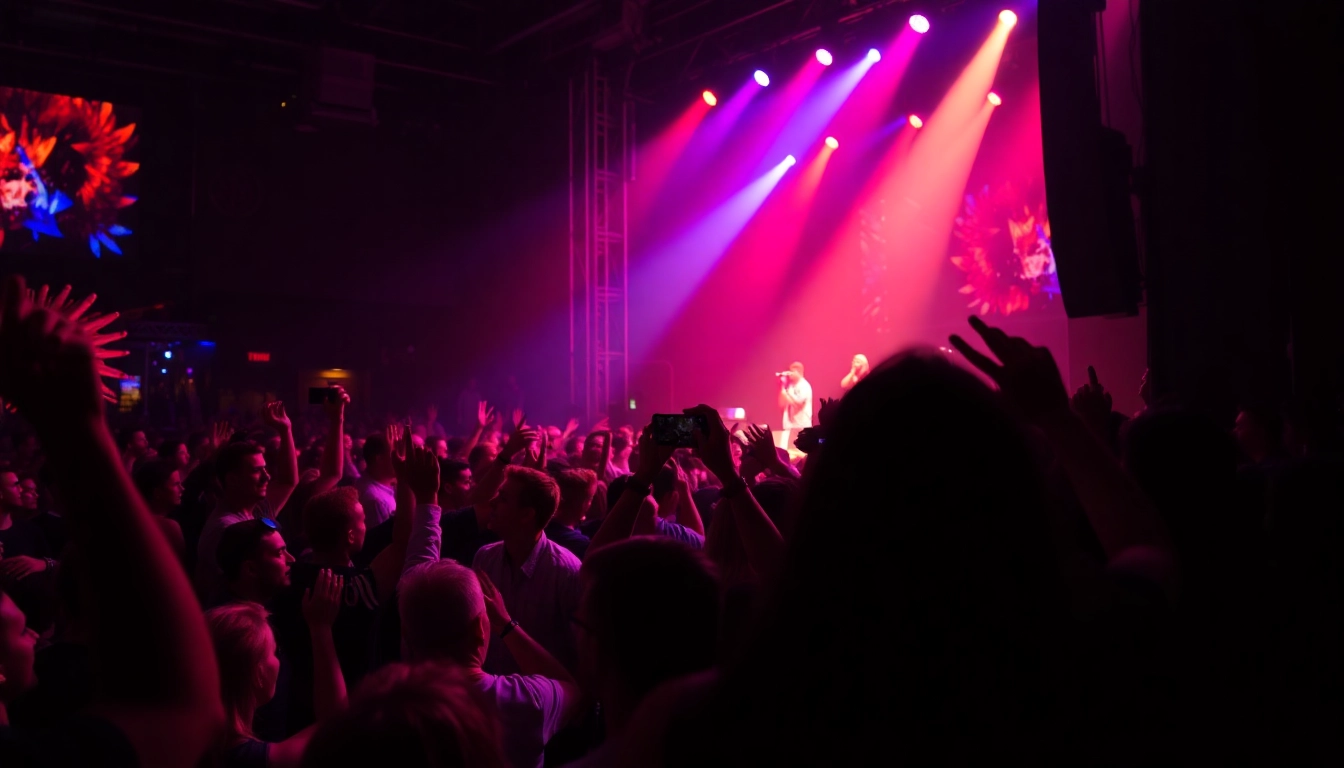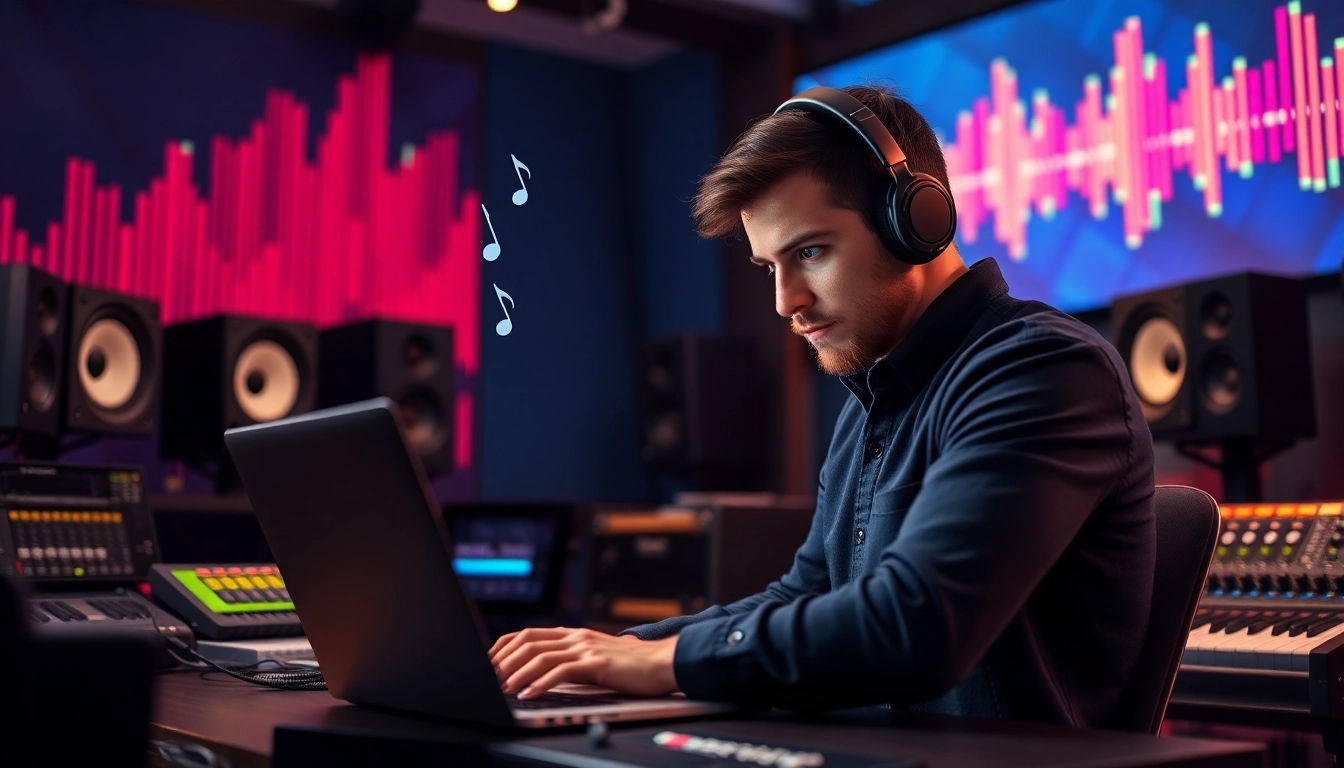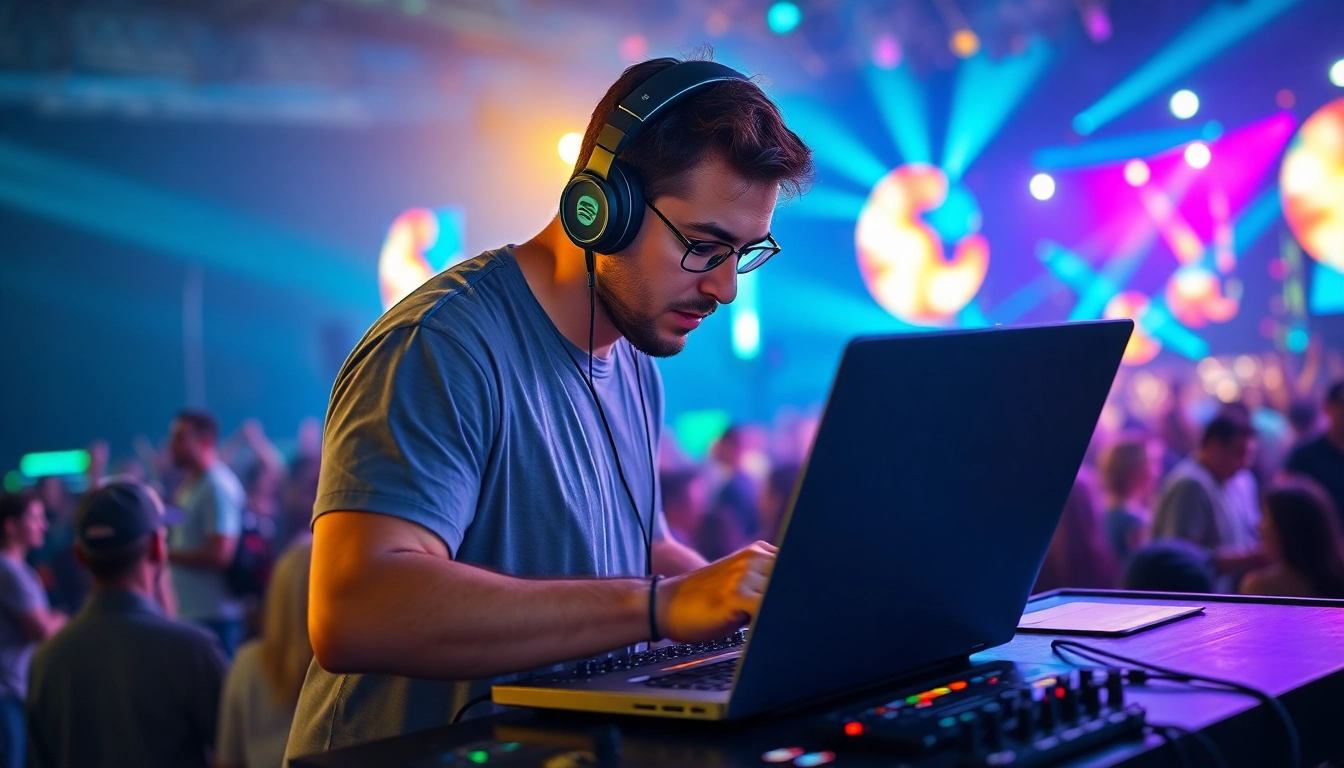Understanding the Passion of Live Music Fans
Live music fans are a unique breed, distinguished not only by their love for music but also by the emotional connections they share with artists, other fans, and the experiences created at live events. This demographic encompasses a broad range of individuals, each bringing their motivations and stories into the vibrant world of concerts and festivals. Understanding what drives their passion can help artists, venues, and marketers foster stronger relationships with these fans. Whether it’s the thrill of witnessing a favorite band perform live or the emotional catharsis that comes from a shared experience in a crowded venue, these elements contribute to a rich understanding of Live Music Fans.
What Drives the Love for Live Music?
The passion for live music often stems from several key factors. Firstly, the embodied sense of community that arises from shared experiences is significant. Concerts create a collective atmosphere where individuals feel part of something larger, a trend noted in various studies on social connectedness. Additionally, there is the visceral thrill of live performances—the spontaneity, energy, and authenticity of seeing artists in their raw form cannot be replicated through recorded media.
Moreover, the emotional impact of music plays a fundamental role. Live performances can evoke powerful emotions; songs can resonate with personal experiences, creating memories that transcend the event itself. Fans often seek out these moments of connection, making live performances not just a form of entertainment, but a crucial element of their identity.
Demographics of Live Music Fans
The demographics of live music fans are as diverse as the genres they encompass. Typically, these fans range from teenagers to those in their middle age, with varying musical tastes influenced by cultural backgrounds, geographic locations, and personal experiences. Recent studies reveal that millennials and Gen Z notably comprise a large portion of this audience, showcasing a thirst for unique and immersive experiences.
Understanding these demographics is vital for anyone looking to engage effectively with this audience. For instance, younger fans tend to be more inclined toward electronic and indie music, often integrating social media platforms to discover new music and connect with fellow fans. Meanwhile, older fans may favor rock or jazz genres, seeking nostalgia and familiarity in performances. Recognizing these distinctions allows marketers and event planners to tailor their offerings and messaging appropriately.
How Live Music Cultivates Community
One of the remarkable aspects of live music is its ability to cultivate community among fans. At concerts, forums, and festivals, individuals bond over their shared interests, often forming friendships that extend beyond the event. This social aspect is not accidental; many artists actively encourage fan interaction through meet-and-greets, fan clubs, and exclusive content sharing.
Moreover, local music scenes play a crucial role in fostering a sense of belonging. Many cities host regular live music events that bring together diverse groups. These occurrences serve as platforms for uncovering local talent while allowing fans to engage in their communities, emphasizing the importance of grassroots movements in the music industry.
Creating Engaging Content for Live Music Fans
To attract the attention of live music fans, content must be both engaging and relevant, offering valuable insights and experiences. This engagement goes beyond mere promotional content; it should resonate emotionally and create connections that are lasting.
Identifying What Fans Want to See
Understanding the interests and preferences of live music fans is crucial. Surveys, social media interactions, and concert feedback can provide insights into what fans most desire from content. For instance, many fans look for behind-the-scenes footage, interviews with artists, and exclusive performances. Moreover, the emergence of formats such as vlogs and livestreams allows fans to engage with their favorite artists more intimately.
In-depth analysis of music streaming platforms can also yield valuable information regarding listener preferences and behavior. Utilizing data analytics tools can help organizations identify trends and tailor their content strategies to meet specific demands, ensuring they remain relevant in a competitive landscape.
Utilizing Multimedia for Engagement
In today’s digital age, multimedia content is essential for engaging audiences effectively. Video, audio, and interactive content can enhance the fan experience significantly. For example, high-quality videos showcasing live performances, artist interviews, and fan reactions can help cultivate a vibrant community online.
Additionally, platforms like Instagram and TikTok enable real-time sharing of events, allowing fans to witness performances as they happen, further deepening their connection. Interactive content such as polls, quizzes, and live Q&A sessions can also stimulate engagement, helping fans feel more connected to the artists they love.
Success Stories of Fan Engagement
Numerous artists and organizations have successfully leveraged innovative strategies to engage with live music fans. For instance, Taylor Swift is renowned for her fan engagement initiatives, which include surprise performances and personalized communications. Such tactics not only create buzz but also build lasting loyalty among her audience.
Similarly, smaller indie bands often utilize social media platforms to foster close-knit communities, regularly interacting with fans and sharing authentic content that resonates deeply with their followers. These success stories illustrate the potent combination of creativity and community involvement in engaging music fans effectively.
Effective Marketing Strategies to Reach Live Music Fans
Having a solid marketing strategy is pivotal for reaching and engaging live music fans. This approach should integrate various channels and methods that resonate with the audience and leverage emerging trends effectively.
Leveraging Social Media Influencers
Influencer marketing has emerged as a powerful tactic, particularly in the music industry. Collaborating with social media influencers who share similar interests with target audiences allows brands to enhance their reach and credibility. Many fans look for recommendations from peers or respected figures within their music communities before making decisions regarding concerts or merchandise purchases.
Additionally, micro-influencers—those with smaller but highly engaged followings—often yield higher engagement rates, making them valuable allies in conveying messages authentically. Ensuring that such collaborations align with genuine content can significantly boost a brand’s visibility and trustworthiness.
Email Campaigns Tailored for Music Lovers
Email marketing continues to be an effective strategy for fostering direct connections with fans. By segmenting audiences based on preferences and behaviors, organizations can craft personalized messages that resonate deeply with their audience. For instance, sending tailored content, such as concert notifications or exclusive artist interviews, encourages fans to engage further.
Moreover, leveraging data analytics to track engagement metrics can help marketers refine their strategies, ensuring that emails remain relevant and valuable to subscribers. Building an engaged email list not only improves communication efficiency but also allows for direct sales opportunities and increased attendance at concerts and events.
Utilizing SEO for Live Music Promotions
Search engine optimization (SEO) is crucial for any brand looking to engage live music fans effectively. By optimizing content for relevant keywords, such as “live music events” or “concert tickets,” brands can increase their visibility on search engines, directing traffic to their event pages or promotional sites.
Consistently producing high-quality, engaging content that incorporates these keywords naturally can enhance organic search rankings. This approach not only attracts fans searching for music events but also establishes the brand as a trustworthy authority within the industry.
Enhancing the Live Music Experience
To truly resonate with live music fans, it is vital to provide unforgettable experiences that enhance their connection to the music and community. The following strategies focus on how to create memorable moments that leave lasting impressions.
How to Create Memorable After-Show Interactions
Post-show interactions make a significant impact on the overall concert experience. Opportunities for fans to meet artists post-performance can enhance their emotional connection and foster loyalty. Such interactions can range from meet-and-greets to Q&A sessions, allowing fans to engage with artists on a personal level.
Additionally, creating exclusive after-parties or fan gatherings can enhance the sense of community among attendees. These interactions not only solidify the connection fans feel towards artists but can also serve as powerful marketing tools, encouraging fans to share their experiences through social media and word-of-mouth.
Implementing Feedback Mechanisms with Fans
Listening to fans is crucial for any organization focused on improving the live music experience. Implementing feedback mechanisms—such as surveys, suggestion boxes, or social media polls—provides valuable insights into what works and what needs improvement post-concert. This practice empowers fans, demonstrating that their opinions matter, which can significantly improve customer loyalty.
Additionally, addressing common feedback themes—whether they relate to ticketing processes, venue management, or artist performances—can lead to tangible improvements, fostering a cycle of continued engagement and satisfaction among fans.
Tips for Curating Live Music Events
Successfully curating live music events requires a keen understanding of your target audience. Consideration of genres, artist line-ups, and local music preferences is critical when planning. Collaborating with local influencers can also enhance outreach and engagement.
Moreover, focusing on creating a unique atmosphere at events—through stage design, lighting, and audience interactions—can elevate the entire experience. Providing diverse food and beverage options, along with comfortable venue layouts, can further enhance fan satisfaction, encouraging attendees to return for future events.
Measuring Success: Metrics for Engaging Live Music Fans
To gauge the effectiveness of engagement strategies, it’s paramount to employ metrics that provide a clear picture of audience behavior and satisfaction. Defining key performance indicators (KPIs) can direct efforts towards continuous improvement.
Defining Key Performance Indicators
KPIs for engaging live music fans can include attendance rates, ticket sales, social media engagement, and audience retention. Establishing clear goals helps identify the success of campaigns and allows for focused marketing efforts moving forward. For instance, an increase in social media following after a concert can signal successful outreach and content engagement.
Moreover, tracking these metrics over time allows organizations to adapt strategies effectively, responding directly to fan preferences and market trends.
Tools for Analyzing Audience Engagement
A variety of tools exist to help analyze audience engagement in the live music sector. Google Analytics, social listening tools, and ticketing platform analytics provide valuable insights into user interactions, demographic information, and event performance. By using these tools, organizations can deeply understand their audience and refine their approaches accordingly.
Incorporating these analytical insights can help inform marketing strategies and enhance overall fan experiences, making data-driven decisions that resonate with audiences.
Adapting Strategies Based on Fan Feedback
After gathering and analyzing feedback, organizations must have a clear process for implementing changes based on fan insights. This involves not just reactive adjustments, but proactive strategies that anticipate trends and listener needs. By continuously engaging with fans, responding to their requests, and integrating their suggestions into future events, organizations can reinforce their commitment to fan engagement and satisfaction.



